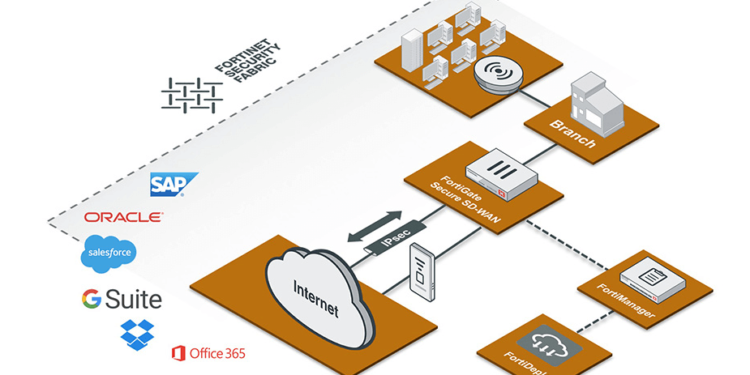Optimizing network performance with SD-WAN systems can significantly benefit many businesses. However, maximizing performance requires specific knowledge and skill, so selecting the right solution for your company is essential.
The best way to do this is to consider the following tips and practices for ensuring your network stays optimized:
Use a Cloud-Based Management Platform
A cloud-based management platform can help you optimize your network performance with SD WAN systems by enabling a central control point that provides consistent networking policies. It can also automatically route traffic based on application requirements and the availability and performance of different network links.
The most crucial benefit of using a cloud-based management platform is that it can configure a virtual network across multiple locations, offices, and satellite sites. This enables an organization to add a remote office quickly or connect one or more cloud locations without modifying the existing hardware network infrastructure.
Another advantage of using a cloud-based management platform for optimizing network performance with SD-WAN systems is that it offers centralized monitoring and control. This can be crucial for addressing issues from changing network configurations or expansion plans.
For example, suppose an organization is preparing to expand to new locations or introduce a VPN to secure data transfer across circuits. In that case, it will need a way to keep these connections running while maintaining security. A cloud-based management platform can help solve this problem by providing a way to configure an SD-WAN device with a VPN connection for a seamless connectivity experience between these locations.
In addition, a cloud-based management platform can give you a way to separate your remote, cloud-destined traffic from your branch locations or work-from-home employees. This reduces bottlenecks and improves network performance for your remote and on-premises systems.
Automate Routing
When optimizing the network performance with SD-WAN systems, one of the critical components is automating routing. By using machine learning and other automation forms, SD-WAN solutions can route data across the most appropriate path for the application.
Because applications typically need a lot of bandwidth, the system must prioritize them when choosing routes. For example, voice and media could take the path over one circuit, while internal applications can be routed over another course with more capacity.
The system will monitor each data flow and determine which route will work best for the application. For example, if an email application needs a low latency, high-quality path, the system will deliver that traffic over a route that matches its SLAs.
The system automatically routes multiple applications over the most appropriate path if they require high bandwidth. This will help maximize the utilization of the WAN network and provide a higher service level agreement.
Another advantage of automated routing is that it can improve scalability by adding links to remote locations quickly and easily without costly manual deployments. This helps businesses reduce ownership costs and maintain the highest quality of service for their users.
Automating several tasks to streamline workflows is vital when optimizing the network performance with SD-WAN. This includes real-time path selection, which can be accomplished by updating the system with machine learning forms. This will help speed up automated decisions and increase the precision of those decisions.
Deploy Multi-Tunnel Path Optimization (DMPO)
A vast area network (WAN) is a network that connects devices from multiple locations. This allows people to access data on the internet, which is known as a “cloud.” It’s a way for companies to connect their devices and systems worldwide so everyone can work together.
In the past, it took a lot of work to manage and direct traffic across a WAN. This often resulted in backhauling data to a centralized point in the company’s data center, which can lower application performance and hinder productivity.
Fortunately, SD-WAN systems can route traffic based on specific business policies and the health and performance of available network links at the destination location. This can make it possible to direct traffic where it’s most needed and improve application performance, thereby boosting overall business productivity.
This is achieved by deploying multi-channel path optimization (DMPO). In addition to allowing customers to prioritize applications over their bandwidth needs, DMPO can detect and remediate WAN link degradation.
To do this, DMPO continuously monitors the performance of every tunnel between a VMware Edge or Gateway and any other DMPO endpoints. It measures loss, latency and jitter on each tunnel and communicates these metrics to the nearest DMPO endpoint every 100 ms.
This allows DMPO to react to link degradation immediately, steering affected application flows away from the wrong link and onto a better one before it worsens. This ensures that applications continue functioning and users aren’t negatively impacted by the outage.
Invest in Quality of Service (quality of service)
Networks must support the demands of diverse applications and devices. This includes real-time inventory, POS terminals, video cameras and digital signage. SD-WAN systems can provide the bandwidth to support these connections and secure connectivity between locations.
As a result, organizations must optimize their WAN infrastructure to deliver the best possible experience for users. This means optimizing bandwidth by applying dynamic tools like data compression, deduplication and application acceleration.
This helps reduce the overall bandwidth requirement, especially for applications sensitive to latency. In addition, it can reduce the amount of traffic that needs to be sent across a WAN connection.
Using an SD-WAN system can also help improve quality of service by automatically steering traffic around network links that are lagging or causing packet loss. This can help prevent downtime and other performance disruptions from occurring.
It can also help prioritize critical applications over other traffic, enabling them to use the best available transport and ensure smooth operation. For example, an organization with a VoIP call center could configure its SD-WAN device to prioritize voice packets over other data, providing a smooth experience for employees and clients.
SD-WAN can also be used to abstract away the differences in connectivity types, such as MPLS and broadband so that decisions about how traffic is routed are more connectivity agnostic. This can give enterprises more flexibility in their WAN architecture and help reduce their costs by providing lower reliance on specialized MPLS networks.







